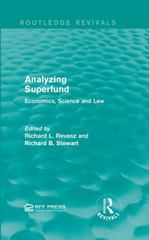Question
Question 15 If a household consumer withdraws $5,000 from their savings account, initially, M1 will ________ and M2 will ________. Adecrease; decrease Bdecrease; increase Cincrease;
Question 15
If a household consumer withdraws $5,000 from their savings account, initially, M1 will ________ and M2 will ________.
Adecrease; decrease
Bdecrease; increase
Cincrease; be constant
Dincrease; decrease
Eincrease; increase
Question 16
The supply of loanable funds is ________ because households save more at higher interest rates, while the demand for loanable funds is ________ because firms prefer to borrow at lower interest rates.
Aupward sloping; downward sloping
Bvertical line; upward sloping
Cdownward sloping; upward sloping
Ddownward sloping; horizontal line
Ehorizontal line; downward sloping
Question 17
Which of the following stands correct about the lags in fiscal and monetary policies?
AThe time required to identify a problem is greater in the case of monetary policy.
BMore time is required to implement a monetary policy decision.
CThe time required to identify a problem is greater in the case of fiscal policy.
DThere is no lag time in implementing a fiscal policy decision.
EThe lags in both fiscal and monetary policies are of the same magnitude.
Question 18
The equilibrium in the market of loanable funds determines the
Areal interest rate and quantity of loanable funds
Bnominal interest rate and quantity of money supply
Cnominal interest rate and quantity of loanable funds
Dreal interest rate and demand for money
Ereal interest rate and supply of goods and services
Question 19
Assume that a bank has a total deposit of $55,000 and the reserve ratio is 20%. What are the amounts of money that the bank will keep for itself and it will give out as loans?
AThe bank's fractional reserve is equal to $11,000, and the excess reserve is equal to $44,000.
BThe bank's fractional reserve is equal to $11,000, and the excess reserve is equal to $55,000.
CThe bank's fractional reserve is equal to $44,000, and the excess reserve is equal to $11,000.
DThe bank's fractional reserve is equal to $55,000, and the excess reserve is equal to $66,000.
EThe bank's fractional reserve is equal to $55,000, and the excess reserve is equal to $44,000.
Question 20
Use the data table to answer the question that follows.

Step by Step Solution
There are 3 Steps involved in it
Step: 1

Get Instant Access to Expert-Tailored Solutions
See step-by-step solutions with expert insights and AI powered tools for academic success
Step: 2

Step: 3

Ace Your Homework with AI
Get the answers you need in no time with our AI-driven, step-by-step assistance
Get Started


